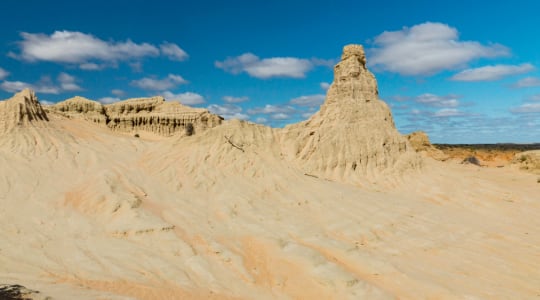
Willandra Lakes is a World Heritage Site located in the far southwest of New South Wales, Australia. It consists of a complex of ancient lakes that have since dried up, leaving behind a range of distinctive landscapes and archaeological sites that provide important insights into human history and the natural environment of Australia.
The site spans over 240,000 hectares and includes a number of interconnecting lakes, sand dunes, and the Willandra Creek system. The lakes were once filled with water and supported a diverse range of plant and animal life, including fish, waterfowl, and aquatic plants. Over time, the lakes dried up, leaving behind a series of dry lake beds and sand dunes.
The area has been inhabited by Indigenous Australians for at least 50,000 years, and there are a number of archaeological sites throughout the Willandra Lakes that provide evidence of the culture and way of life of these early people. The most famous of these sites is the Lake Mungo area, which contains the remains of one of the oldest known cremations in the world, as well as evidence of early human burials and stone tools.
Today, the Willandra Lakes is a popular destination for tourists interested in exploring the unique landscapes and rich cultural history of the region. Visitors can explore the dry lake beds and sand dunes, take guided tours of the archaeological sites, and learn more about the Indigenous culture and history of the area. The site is also home to a diverse range of flora and fauna, including a number of rare and endangered species, making it an important conservation area as well as a valuable cultural heritage site.
Explore Near Willandra Lake
Discover 1 attraction within 75km. Perfect for planning day trips, finding connecting flights, or discovering new destinations to explore during your visit.
Nearby Attractions & Places to Visit
1 destination within 68.3km from your location
